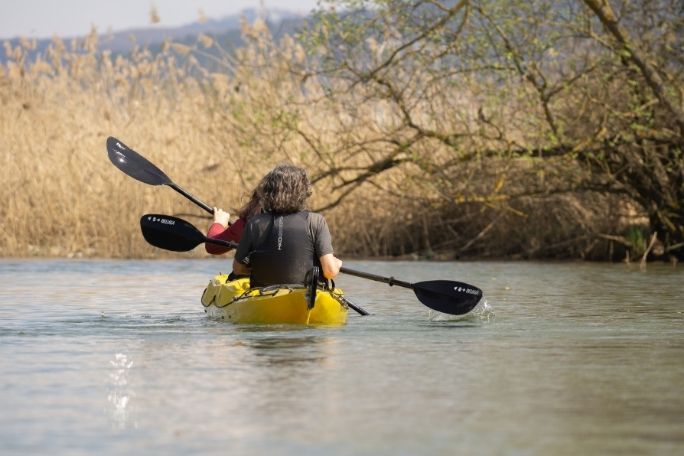Lesson summary
Students explore the question ‘how are you connected to the ocean?’ They begin by completing a thinking routine around their thoughts, feelings and questions about the ocean before being immersed in the topic of human connections to the ocean through images, written texts and clips. They then reflect on these materials to generate questions they would like answered about our connection to the ocean. These questions can be used to guide further inquiry or used in other lessons in this unit.
Learning intentions:
Students understand...
- that we are connected to the ocean in many ways, including in the ways that we need or take from the ocean and the ways that we impact the ocean
Success criteria:
Students can...
- work independently and collaboratively
- contribute to class discussions
- think critically about visual and written stimuli
- generate questions
Lesson guides and printables
Curriculum links
Select your curriculum from the options below.
Lesson details
Curriculum mapping
Australian curriculum content descriptions:
Year 4 HASS:
- Pose questions to investigate people, events, places and issues (ACHASSI073)
- The diversity of Australia’s first peoples and the long and continuous connection of Aboriginal and Torres Strait Islander Peoples to Country/Place (land, sea, waterways and skies) (ACHASSK083)
- The importance of environments, including natural vegetation, to animals and people (ACHASSK088)
Year 5 HASS:
- Develop appropriate questions to guide an inquiry about people, events, developments, places, systems and challenges (ACHASSI094)
- The influence of people, including Aboriginal and Torres Strait Islander Peoples, on the environmental characteristics of Australian places (ACHASSK112)
Year 6 HASS:
- Develop appropriate questions to guide an inquiry about people, events, developments, places, systems and challenges (ACHASSI122)
- The world’s cultural diversity, including that of its indigenous peoples (ACHASSK140)
Syllabus outcomes: HT2-5, HT3-5, GE2-1 , GE2-1 , GE2-3, GE2-4, GE3-1, GE3-2, GE3-2, GE3-4
General capabilities: Critical and Creative Thinking, Literacy.
Cross-curriculum priority: Sustainability (OI.2), Aboriginal and Torres Strait Islander Histories and Cultures (OI.2, OI.3).
Relevant parts of Year 4 HASS achievement standards: Students develop questions to investigate. They identify the interconnections between components of the environment and between people and the environment.
Relevant parts of Year 5 HASS achievement standards: Students develop questions for an investigation. They identify and describe the interconnections between people and the human and environmental characteristics of places.
Relevant parts of Year 6 HASS achievement standards: Students develop appropriate questions to frame an investigation. They describe how people, places, communities and environments are interconnected.
This lesson is part of the wider unit of work Take 3 For The Sea – Project-based Learning – Years 4 to 6
It is also aligned to the United Nations Sustainable Development Goal #14, Life Below Water. By taking three bits of rubbish from the sea, we can help reduce marine pollution, protect and restore ecosystems, and conserve coastal and marine areas.
Time required: 60 mins
Level of teacher scaffolding: High – requires preparation from teachers. Teachers will also need to oversee class discussions and activities
Resources required
- Device capable of presenting a website and video to the class
- Ocean Connection Images
- Gallery Materials
- Student Worksheet – one copy per student
Skills
This lesson is designed to build students’ competencies in the following skills:
- Communication
- Critical thinking
Additional info
Take 3 is an Australian charity removing rubbish from the environment through education programs, international campaigns and clean-ups. Take 3’s call to action is simple: Take 3 pieces of rubbish with you when you leave the beach, waterway or… anywhere and you have made a difference.


Welcome back!
Don't have an account yet?
Log in with:
Create your free Cool.org account.
Many of our resources are free, with an option to upgrade to Cool+ for premium content.
Already have an account?
Sign up with:
By signing up you accept Cool.org's Terms and Conditions(Opens in new tab) and Privacy Policy(Opens in new tab).